Abstract
Phosphate inhibited the formation of trimethylarsine from arsenite, arsenate, and monomethylarsonate, but not from dimethylarsinate, by growing cultures of Candida humicola. Phosphite suppressed trimethylarsine production by growing cultures from monomethylarsonate but not from arsenate and dimethylarsinate, and hypophosphite caused a temporary inhibition of both proliferation and the conversion of these three arsenic sources to trimethylarsine. Resting cells of C. humicola derived from cultures grown in arsenic-free media generated the volatile arsenical only after a lag phase. High antimonate concentrations reduced the rate of conversion of arsenate to trimethylarsine by resting cells, but nitrate was without effect.
Full text
PDF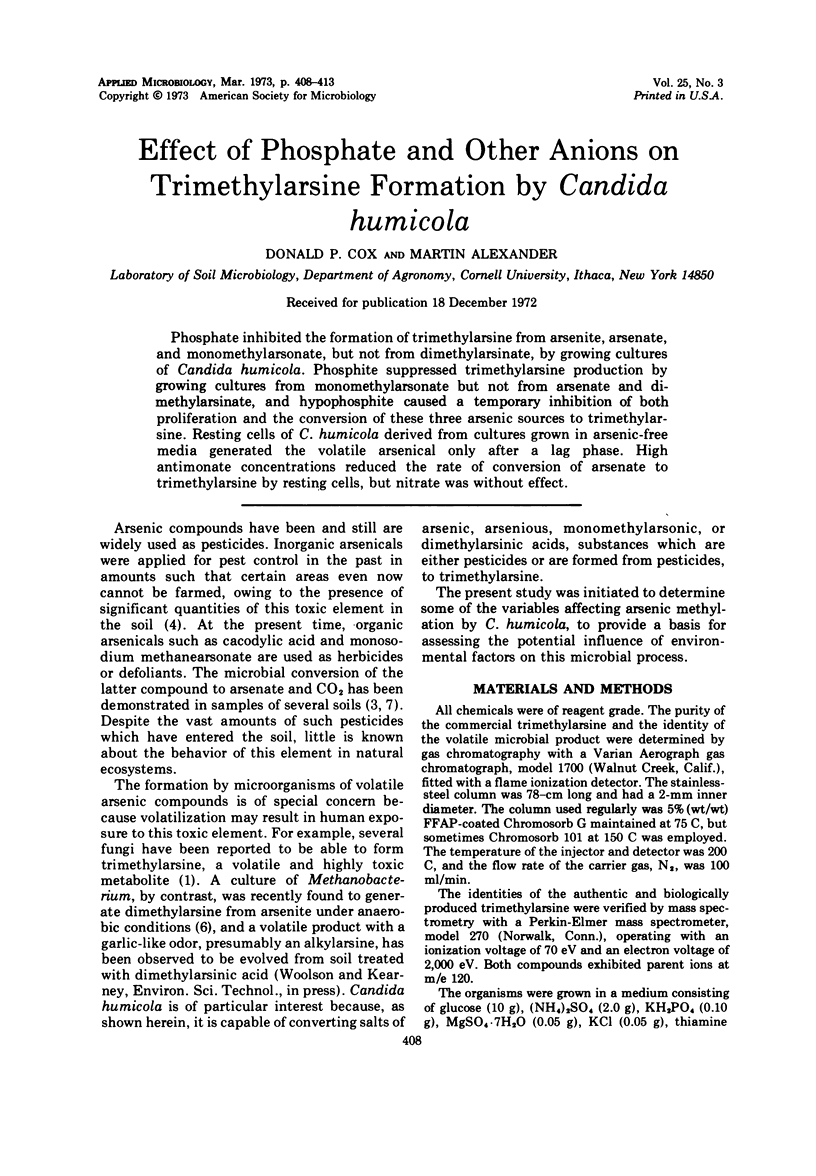
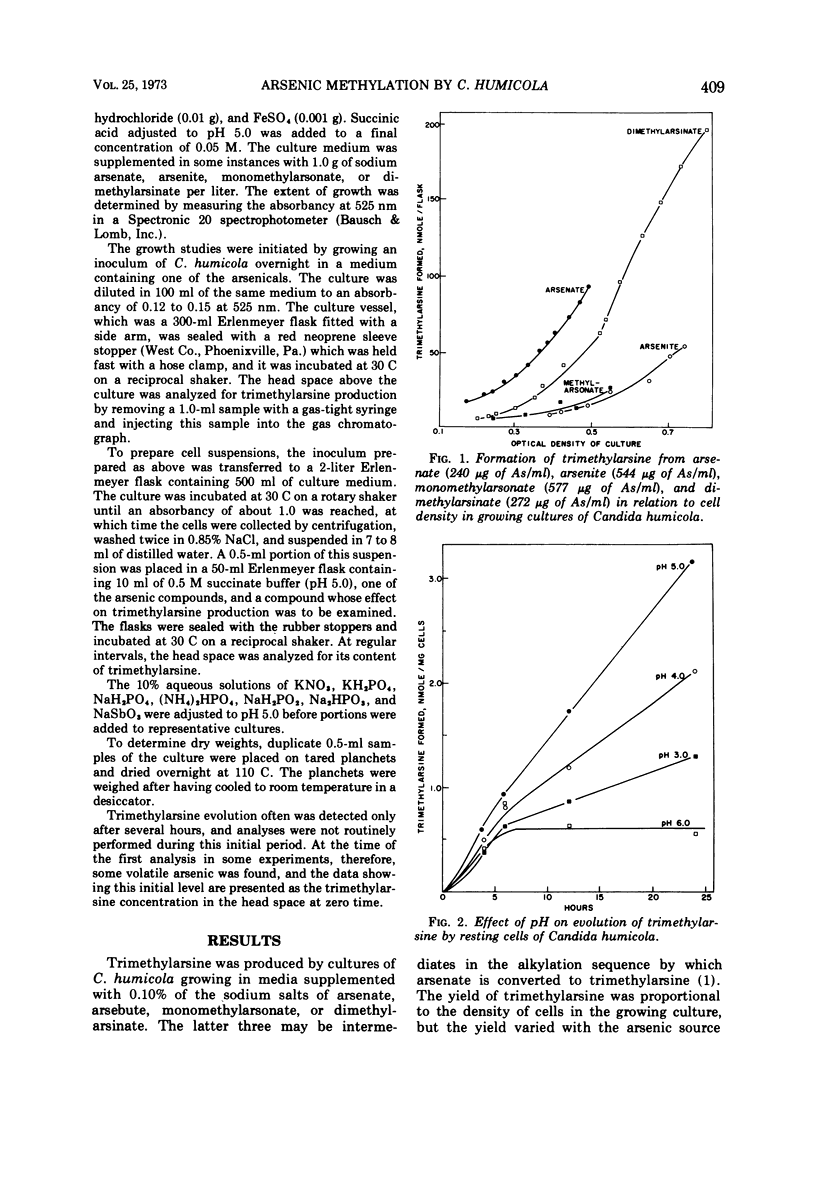
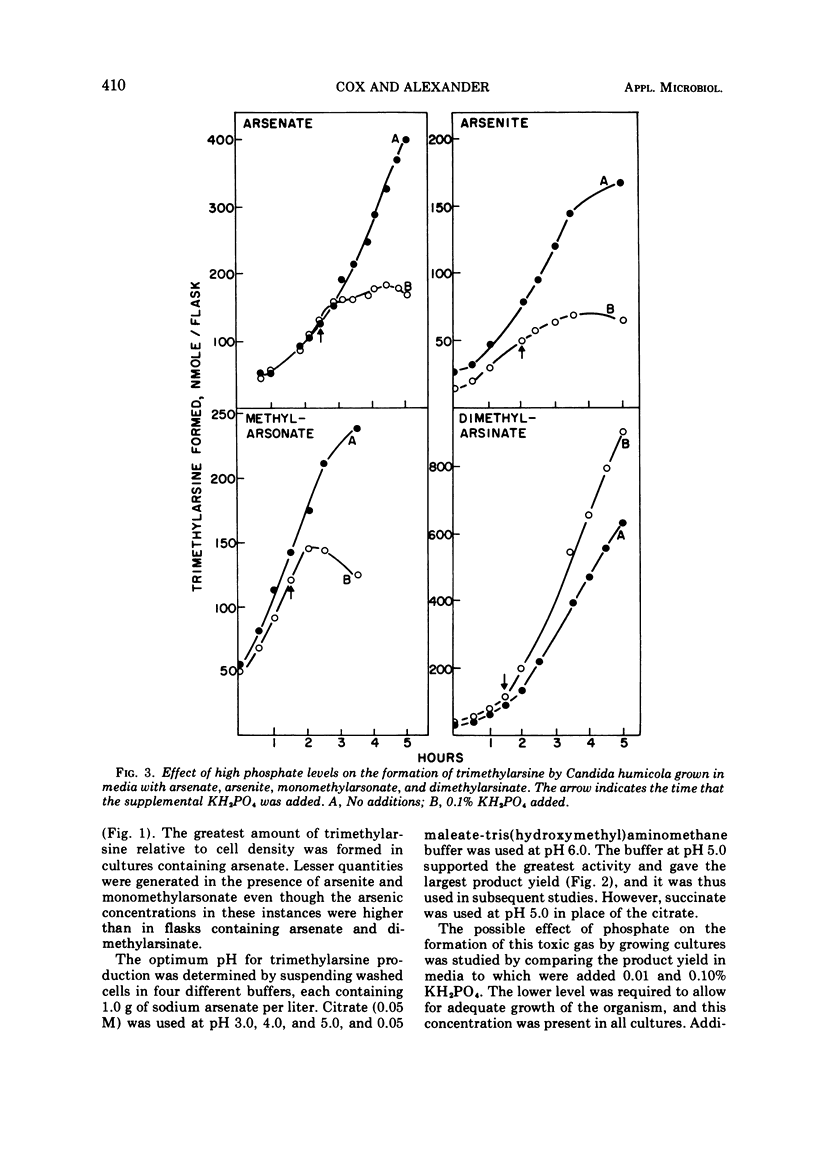
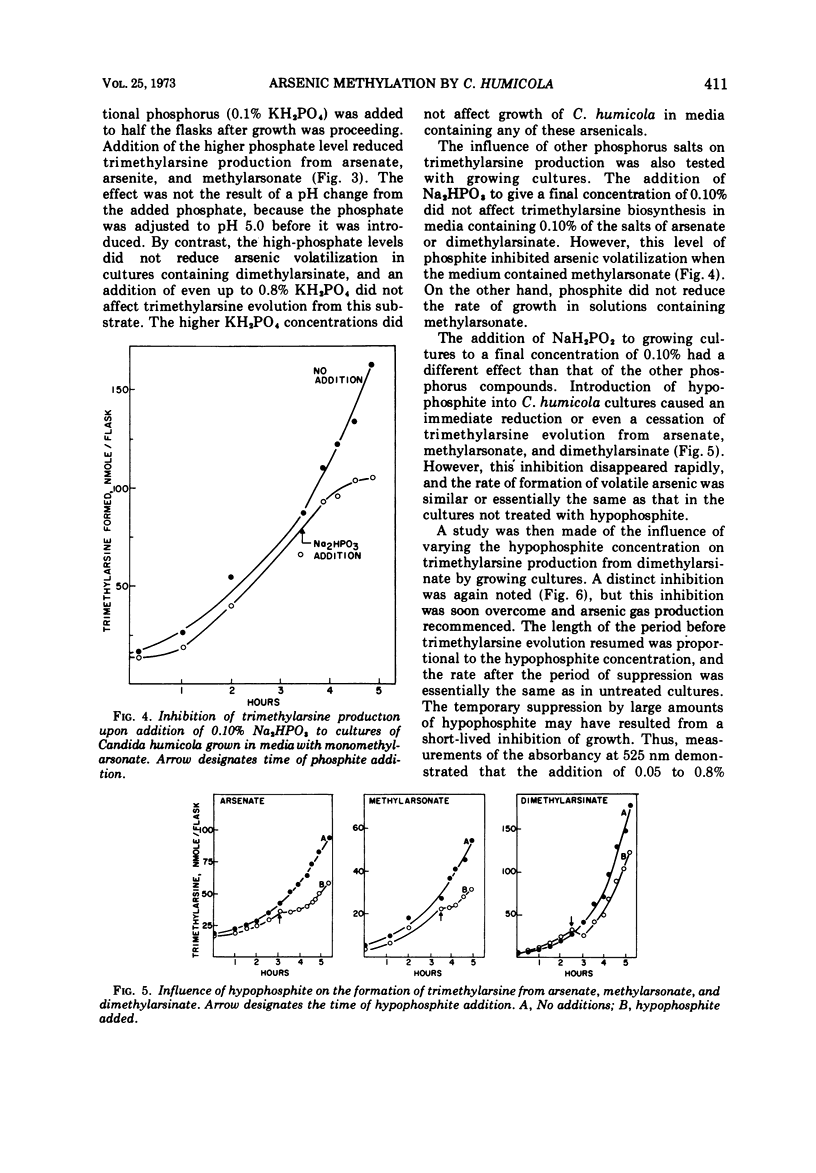
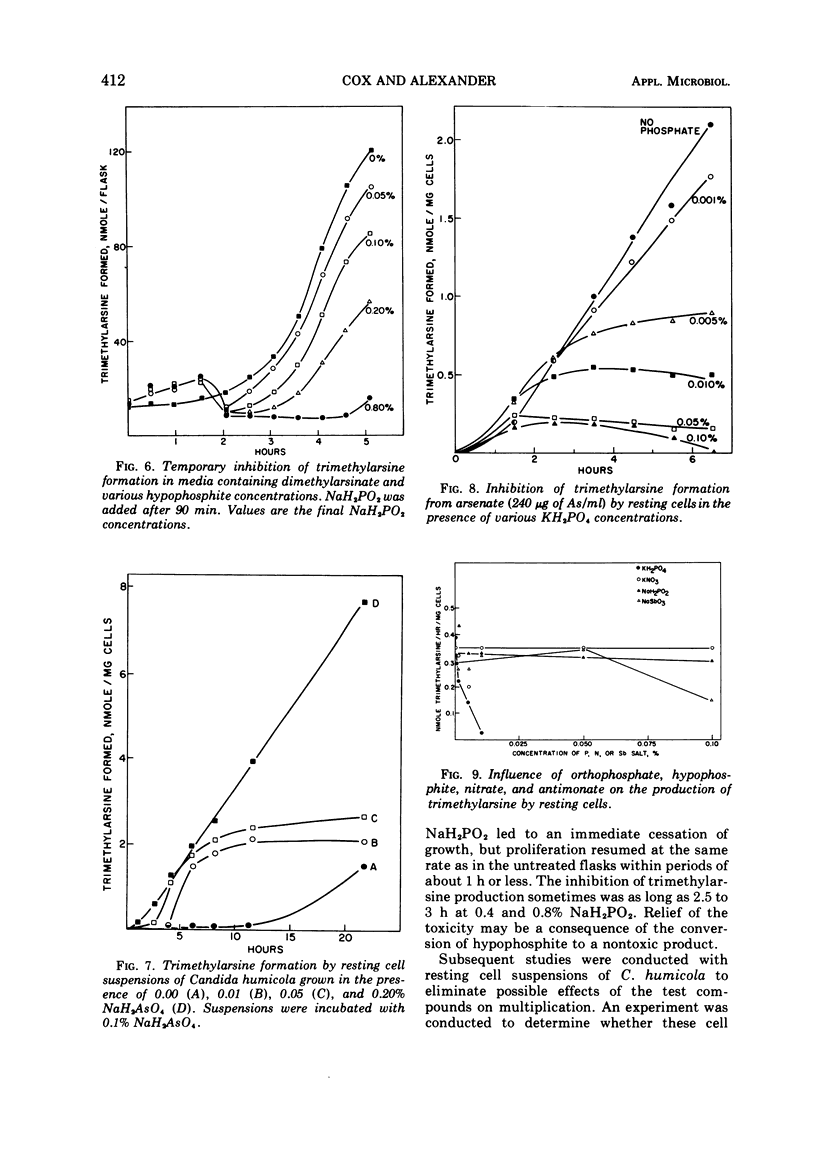
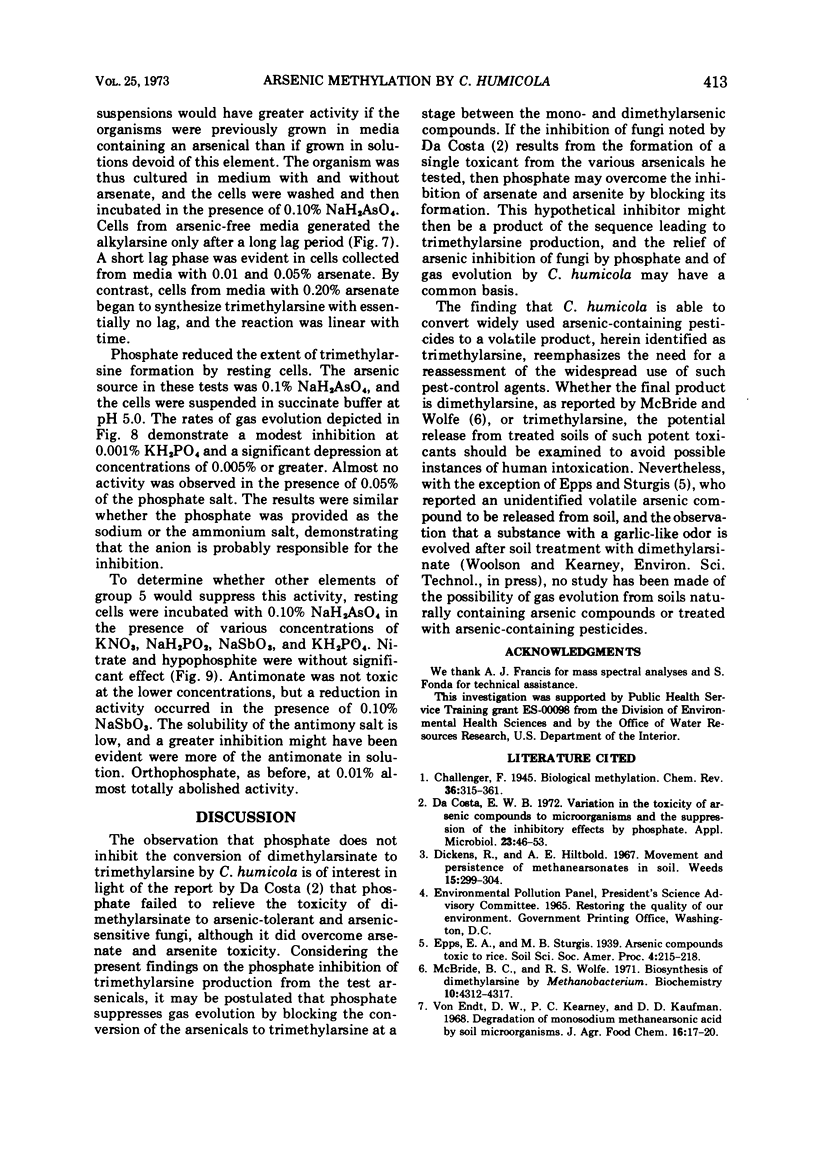
Selected References
These references are in PubMed. This may not be the complete list of references from this article.
- Da Costa E. W. Variation in the toxicity of arsenic compounds to microorganisms and the suppression of the inhibitory effects by phosphate. Appl Microbiol. 1972 Jan;23(1):46–53. doi: 10.1128/am.23.1.46-53.1972. [DOI] [PMC free article] [PubMed] [Google Scholar]
- McBride B. C., Wolfe R. S. Biosynthesis of dimethylarsine by Methanobacterium. Biochemistry. 1971 Nov;10(23):4312–4317. doi: 10.1021/bi00799a024. [DOI] [PubMed] [Google Scholar]


